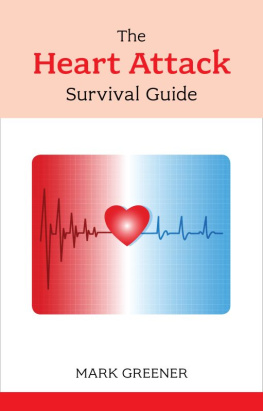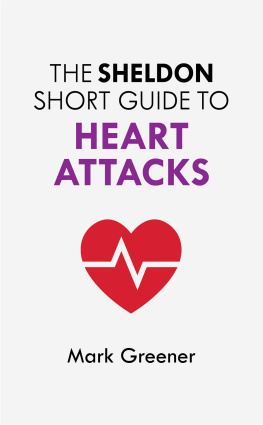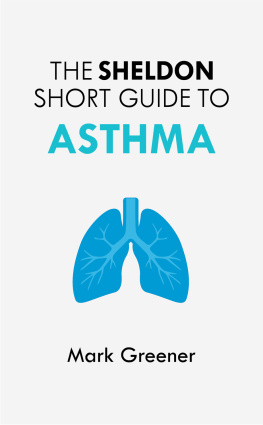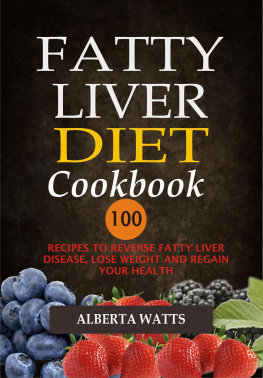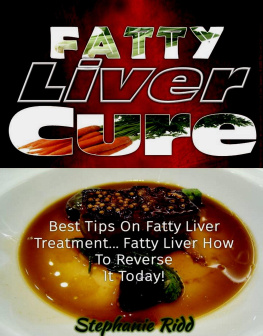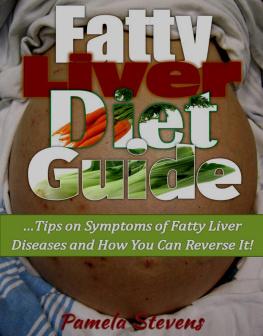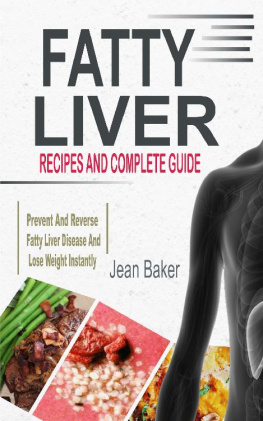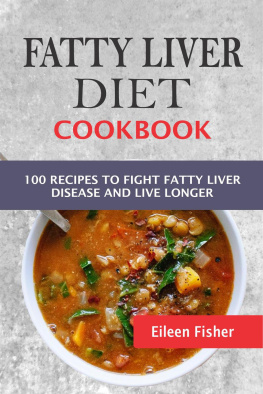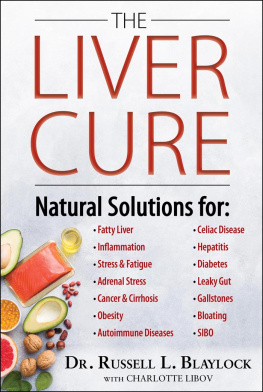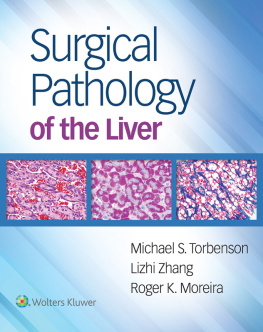
The Sheldon Short Guide to
Liver Disease
Mark Greener spent a decade in biomedical research before joining MIMS Magazine for GPs in 1989. Since then, he has written on health and biology for magazines worldwide for patients, healthcare professionals and scientists. He is a member of the Royal Society of Biology and is the author of 21 other books, including The Heart Attack Survival Guide (2012) and The Holistic Health Handbook (2013), both published by Sheldon Press. Mark lives with his wife, three children and two cats in a Cambridgeshire village.
Sheldon Short Guides
Asthma
Mark Greener
Depression
Dr Tim Cantopher
Diabetes
Mark Greener and Christine Craggs-Hinton
Heart Attacks
Mark Greener
Liver Disease
Mark Greener
Memory Problems
Dr Sallie Baxendale
Phobias and Panic
Professor Kevin Gournay
Stroke Recovery
Mark Greener
Worry and Anxiety
Dr Frank Tallis
THE SHELDON
SHORT GUIDE TO
LIVER
DISEASE
Mark Greener

First published in Great Britain in 2016 by Sheldon Press
An Hachette UK Company
Sheldon Press
Carmelite House
50 Victoria Embankment
London EC4Y 0DZ
www.sheldonpress.co.uk
Copyright Mark Greener 2016
All rights reserved. No part of this book may be reproduced or transmitted in any form or by any means, electronic or mechanical, including photocopying, recording, or by any information storage and retrieval system, without permission in writing from the publisher.
The author and publisher have made every effort to ensure that the external website and email addresses included in this book are correct and up to date at the time of going to press. The author and publisher are not responsible for the content, quality or continuing accessibility of the sites.
British Library Cataloguing-in-Publication Data
A catalogue record for this book is available from the British Library
ISBN 9781847093875
This is not a medical book and is not intended to replace advice from your doctor. Consult your pharmacist or doctor if you believe you have any of the symptoms described, and if you think you might need medical help.
I used numerous medical and scientific papers to write the book that this Sheldon Short is based on: Coping with Liver Disease . Unfortunately, there isnt space to include references in this short summary. You can find these in Coping with Liver Disease , which discusses the topics in more detail. I updated some facts and figures for this book.
According to Greek legend, Zeus once punished humanity by making us forget how to use fire. Another god, Prometheus, restored this knowledge. In revenge, Zeus chained Prometheus to a rock, while an eagle ate his liver. Prometheuss liver regenerated overnight and the eagle feasted again. Prometheuss torment lasted 13 generations until Heracles slew the eagle.
Remarkably, the legend contains a kernel of truth: the livers superlative powers of rejuvenation. Indeed, the liver can regain its normal size and function even after a surgeon removes three-quarters of the organ. Yet numerous diseases and unhealthy lifestyles can overwhelm the livers legendary ability to recover. According to the British Liver Trust (), liver disease kills more people than diabetes and road accidents combined.
Typically, liver diseases progress from hepatitis (liver inflammation) to cirrhosis (scarring) to cancer over 2040 years. So, you can often prevent, or at least delay, serious health problems. This book aims to help you understand liver disease and appreciate the best way to manage symptoms and improve your long-term prospects. I hope that, as well as resolving some immediate issues, this book will inspire further questions, which your doctor, nurse and pharmacist will be happy to answer.
About three weeks after conception, a small bud forms just below the embryos stomach, which develops into the liver and gall bladder. The livers size gradually increases. A healthy adult liver typically weighs between 1,200 and 1,500 g.
Normally, a liver has two lobes: the right lobe is about six times larger than the left. Place your right hand over the lower right-hand side of your ribs. Your handprint roughly covers your liver ( overleaf). The upper edge of the right lobe is about 1 cm below your right nipple. The upper edge of the livers left lobe is about 2 cm below your left nipple.
The gall bladder
The pear-shaped gall bladder fills with and concentrates bile, a greenish-yellow fluid produced by the liver. The gall bladder, which lies under the liver and usually stores around 50 ml of bile, contracts when you eat. This pushes bile along tubes called ducts and into the part of your gut called the duodenum, where bile helps you digest fats.
Looking down a microscope at a slice of human liver reveals rows of cells (hepatocytes) radiating from a central vein. Hepatocytes are the livers main workhorse: a gram of normal liver contains about two million cells. The liver also contains, for example, Kupffer cells, which remove old and damaged blood cells, debris, bacteria, viruses, parasites and cancer cells. Alcohol damages Kupffer cells.
The bodys waste disposal unit
Removing waste is probably the livers best-known role. Our ancestors (and some people in developing countries even today) often scavenged food from the wild. Sometimes their food was decaying or caked in dirt. Water came from rivers and ponds. So, we evolved formidable defences against the poisons, microbes and other chemicals we inevitably consumed.
Ingested food, chemicals and pathogens cross the gut and enter the blood vessels that supply the gastrointestinal tract (gut). This blood passes through the liver before reaching the rest of the body. The liver usually breaks down chemicals to less harmful metabolites that the body can remove more easily in bile (and, in turn, faeces) and urine. For example, the liver removes about one unit of alcohol from your blood an hour, although the rate differs dramatically between people. The liver also receives a rich blood supply from the rest of the body. So, the liver can remove harmful by-products of the processes that keep us alive, as well as chemicals that eluded the first filter or that you inhaled.
The liver also filters lymph, a clear, yellowish fluid that bathes your tissues and contains white blood cells, which help you fight infections. Thats why your lymph nodes (such as the glands under your chin and in your armpits) may swell when you have an infection.
Supplying our energy demands
Cells are, essentially, biological factories. They use a sugar called glucose as fuel. We extract glucose from carbohydrates (such as sugars and starch) in our diet. But we need to keep our bodies going when food is scarce or even if its a while until our next meal.
So, in times of plenty, liver cells stick glucose together into a long chain called glycogen, which stores energy. Glycogen in the liver and muscle stores enough energy to keep an average woman going for about a day. Once glycogen makes up more than about 5 per cent of the livers weight, production declines.
Our ancestors, however, often did not know where their next meal was coming from. So, liver cells convert the additional glucose into fatty acids. The liver releases fatty acids into the blood when the body needs another source of energy. In times of plenty, fat cells (adipocytes) take up glucose, which they use to make another chemical called glycerol. Adipocytes join glycerol to the fatty acids produced by the liver to form fats called triglycerides. This stores enough energy to keep you going for several weeks. When weve depleted our other energy stores, we start breaking down muscle. This releases the building blocks of protein (amino acids). The liver can convert some amino acids into glucose.
Next page

